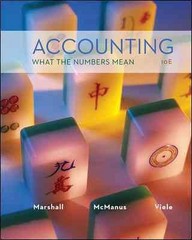Question
Hatfield Medical Supplies' stock price had been lagging its industry averages, so its board of directors brought in a new CEO, Adam Lee. Lee asked
Hatfield Medical Supplies' stock price had been lagging its industry averages, so its board of
directors brought in a new CEO, Adam Lee. Lee asked for the company's long-run strategic plan;
when he learned that no formal plan existed, he decided to develop one himself. Lee had brought
in Rick Novak, a finance MBA who had been working for a consulting company, to replace the
old CFO, and he asked Rick to develop the financial planning section of the strategic plan. In his
previous job, Novak's primary task had been to help clients develop financial forecasts, and that
was one reason Lee hired him.
Novak began as he always did, by comparing Hatfield's financial ratios to the industry averages.
If any ratio was substandard, he discussed it with the responsible manager to see what could be
done to improve the situation. Figure MC-1 provides Hatfield's latest financial statements plus
some ratios and other data that Novak plans to use in his analysis. Notice that the figure is
extracted from an Excel spreadsheet. Novak learned back in his university days that, because of
interactions among variables, any realistic financial forecast must be based on a computer model.
(The model is available to your instructor on the textbook's Web site.) Of course, he is also
aware of the well-known computer axiomgarbage in, garbage out (GIGO). Novak therefore
plans to discuss the model's inputs carefully with Hatfield's operating managers, individually
and collectively in the company's financial planning conference.
Hatfield Medical Supplies (Millions of Dollars Except Per Share Data)
Balance Sheet, 12/31/2010
Income Statement, Year Ending 2010
Cash
$
20
Sales
$2,000
Accts. rec.
280
Op. costs (excl. depr.)
1,800
Inventories
400
Depreciation
50
Total CA
$
700
EBIT
$
150
Net fixed assets
500
Interest
40
Total assets
$1,200
Pretax earnings
$
110
Taxes (40%)
44
Accts. pay. & accruals
$
80
Net income
$
66
Line of credit
$0
Total CL
$
80
Dividends
$20.0
Long-term debt
500
Add. to RE
$46.0
Total liabilities
$
580
Common shares
10.0
Common stock
420
EPS
$6.60
Retained earnings
200
DPS
$2.00
Total common equ.
$620
Ending stock price
$52.80
Total liab. & equity
$1,200
Selected Additional Data for 2010
Hatfield
Industr
y
Hatfield
Industry
Op. costs/Sales
90.0%
88.0%
Total liability/Total assets
48.3%
36.7%
Depr./FA
10.0%
12.0%
Times interest earned
3.8
8.9
Cash/Sales
1.0%
1.0%
Return on assets (ROA)
5.5%
10.2%
Receivables/Sales
14.0%
11.0%
Profit margin (M)
3.30%
4.99%
Inventories/Sales
20.0%
15.0%
Sales/Assets
1.67
2.04
Fixed assets/Sales
25.0%
22.0%
Assets/Equity
1.94
1.56
Acc. pay. & accr. / Sales
4.0%
4.0%
Return on equity (ROE)
10.6%
16.1%
Tax rate
40.0%
40.0%
P/E ratio
8.0
16.0
ROIC
8.0%
12.5%
NOPAT/Sales
4.5%
5.6%
Total op. capital/Sales
56.0%
45.0%
a. Do you think Adam Lee should develop a strategic plan for the company? Why? What
are the central elements of such a plan? What is the role of finance in a strategic plan?
Yes, a strategic plan should be developed for the company. The goal of companies is to create
more wealth for the owners and for financial managers to make their company more valuable
and without well designed strategic and tactical plans in place it is impossible to do. The central
Step by Step Solution
There are 3 Steps involved in it
Step: 1

Get Instant Access to Expert-Tailored Solutions
See step-by-step solutions with expert insights and AI powered tools for academic success
Step: 2

Step: 3

Ace Your Homework with AI
Get the answers you need in no time with our AI-driven, step-by-step assistance
Get Started


